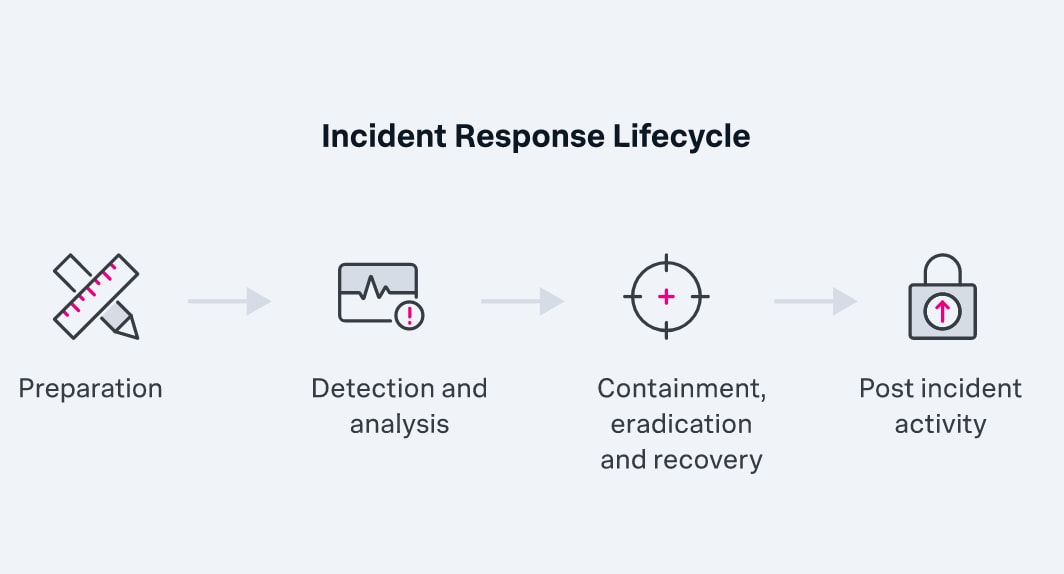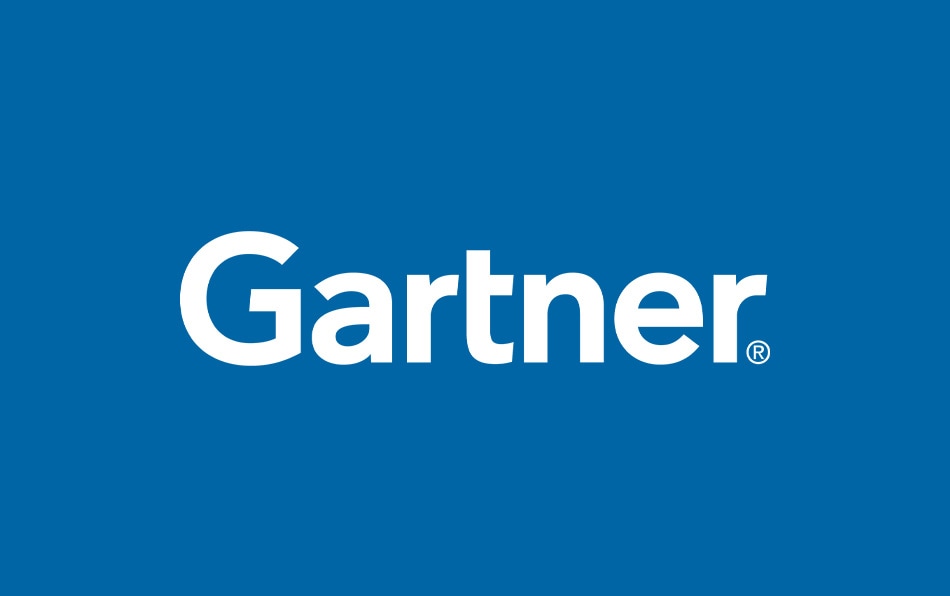DevOps Monitoring: What It Is & How It Works
DevOps is an IT and software delivery concept. It combines people, practices, and tools with the shared goal of accelerating the development of applications and services. Another way to think of it is the intentional combination of software development with IT operations.
Adopting DevOps at the enterprise level typically requires:
- Seamless collaboration between teams of engineers, product managers, and data analysts
- A combination of multiple engineering practices
The continuous development of DevOps practices, as well as other factors like the rapid pace of modern code changes, facilitates a need for DevOps monitoring: a set of tools and processes to support the entire software development lifecycle. So, what are the different types of monitoring in DevOps, and which practices and tools are most effective?
Let’s explore the use cases and potential applications of DevOps monitoring for the enterprise in more detail.
What is monitoring in DevOps?
One flavor of IT monitoring, DevOps monitoring is the process of tracking and measuring the performance of applications and systems in order to help software development teams identify and resolve potential issues more quickly. This is typically done via a manual or automated DevOps monitoring solution or a collection of continuous monitoring tools that gather data on things like:
- CPU utilization
- Response times
- Disk space
DevOps monitoring is also referred to as continuous monitoring (CM) or continuous control monitoring (CCM), but the principle remains the same.
With DevOps monitoring solutions, you get a continuous, real-time view of the whole development pipeline. This is often comprised of continuous planning, development, integration, testing, deployment and operations. In a nutshell, DevOps monitoring processes ensure that the software development life cycle functions more efficiently, enhancing the customer experience while improving business credibility and reducing costs.

Benefits of DevOps monitoring
The main benefit of DevOps monitoring is its ability to define, track, and measure KPIs and metrics across all aspects of DevOps. Here are some specific use cases of DevOps monitoring:
Detect and report errors earlier
Flagging issues to DevOps teams more quickly means they can resolve them before they impact user experience.
(Related reading: UX metrics to know.)
Reduce system downtime
DevOps monitoring tools allow tech teams to have continuous oversight of the database, applications, and networks so they’re able to resolve any issues before system downtimes occur.
Increase security
Through data analysis across the entire ecosystem, continuous monitoring in DevOps automates security controls and measures by identifying inconsistencies or triggers that lead to security failures. Teams can then respond to threats manually (on-call) or automatically with tools.
Enhance observability of DevOps components
Easily identify when various systems and applications in your DevOps stack degrade in performance, cost, security, or other factors to avoid problems down the road.
Uncover the root cause of issues faster
Continuous tracking of logs and metrics can help teams identify the root cause — where a problem started or occurred. This allows engineers to identify patterns in system behavior to look out for in the future. It also leads to improvement in metrics like:
- Mean time to detection (MTTD)
- Mean time to repair (MTTR)
- Mean time to isolate (MTTI)
Improve collaboration
The establishment of a continuous feedback loop improves collaboration between the DevOps teams and engineers, the rest of the enterprise, and both internal and external users.
Enhance the user experience
DevOps monitoring continuously tracks user feedback which can help inform new updates or changes to the app or system.
Ensuring greater visibility in cloud-native environments
Nowadays, cloud-native environments often involve complex and dynamic architecture, like containers or microservices, which have a distributed nature. This increases the complexity of their architecture, thereby increasing the need to have a greater visibility of their performance across all components. DevOps monitoring ensures that you have visibility on a distributed architecture, ensuring quick issue detection and maintaining system reliability.
Boost business credibility
All the functions above help to ensure that an enterprise can be more in tune with its product and is able to improve it using customer and employee feedback — all with limited time, cost, and effort.
Types of monitoring in DevOps
When it comes to utilizing DevOps monitoring for your business, understanding what your enterprise should monitor is the first part of the process. Here are the main types of continuous monitoring in DevOps that you can make use of:
Infrastructure monitoring
Infrastructure monitoring involves real-time tracking of the computer systems, servers, processes and equipment that make up the computing network in an enterprise. With infrastructure monitoring tools, information is collected from specific IT components, including software and hardware units, virtual machines, data centers, networks, disk storage etc.
These continuous monitoring tools ‘supervise’ the computing network environment, helping IT teams identify and address any resource or performance issues more effectively. Not only does this improve internal efficiency, but it can facilitate product and user experience improvement too.
Network monitoring
Within the concept of IT infrastructure monitoring is network monitoring, which refers to tracking the health and performance of a network and its related components. Network monitoring tools help to identify network performance issues by evaluating servers, switches, routers, firewalls, and virtual machines. Metrics that are instrumental in measuring and correcting network issues include:
DevOps tools for continuous network monitoring automate many of the checks that a system administrator would have to perform manually. This means that IT engineers can act quickly on crucial failures and other network problems before they can impact user experience. Such a process is essential for basic network management.
Dependent system monitoring
The objective of dependent system monitoring is to track the availability and performance of external systems and services that your application relies on. These external services could include cloud services, third-party APIs, or microservices within a distributed architecture.
Monitoring dependent systems will help you to detect issues that originate outside your core application. Thus ensuring prompt response to incidents and enhancing the overall system reliability.
Application performance monitoring (APM)
As its name suggests, APM is a type of continuous monitoring that involves measuring the performance and availability of specific applications. Application performance monitoring tools track metrics such as:
- API responses and transactions
- System responses
- Real-user monitoring (RUM)
- And more
Application performance monitoring in DevOps is important because it allows you to identify and resolve issues before they impact the performance of the overall system. This is similar to the goal of network performance monitoring (NPM), but the two practices have fundamental differences which make them both worthwhile to adopt.
(Understand the relationship between NPM and APM.)
Synthetic monitoring
Synthetic monitoring is a form of software testing that uses behavioral scripts to simulate real end-user interactions with an application or website. The goal is to understand how a user would experience an app or website, measuring the performance, speed, and functionality of a particular system or system component.
Synthetic monitoring tools for DevOps can help you identify and fix issues before they impact users, in addition to helping to establish future performance benchmarks.
(See how Splunk supports all these monitoring practices.)
Best practices for DevOps monitoring
As with any DevOps strategy, it’s important to consider best practices of DevOps monitoring strategies in order to develop and implement the process correctly from the onset. Let’s take a look at best practices that support a successful DevOps monitoring strategy:
1. Decide what to monitor
Firstly, and most importantly, you should determine what you need to monitor and why. Reviewing the types of continuous monitoring listed above can help with identifying which systems, applications and metrics you need to make the most of your efforts.
2. Adopt a shift-left testing approach
Shifting left refers to software testing that is performed earlier in the development life cycle, helping to:
- Reduce the duration of test cycles (and costs)
- Improve the quality of a product
- Keep errors to a minimum
Introducing testing practices in pre-production environments enables DevOps teams to get an ongoing view of performance. This can help them to find bugs earlier on, allowing fewer code fixes and preserving the quality of monitoring alerts. One approach to this method of DevOps testing is by setting up relevant, automated alerts in the code development stage to minimize mean time to detect (MTTD) and mean time to isolate (MTTI).
3. Establish your KPIs and goals
Fixed development goals can help you track the success of your DevOps monitoring strategies by showing how well they’re working, as well as providing insights into workflow efficiency and team performance.
To properly define these outcomes, you can document the duration of a sprint and how long it takes to identify, record and fix any issues. This can be done manually, but you can also use tools to automate this configuration step and save time.)
4. Automate incident management and response
In a cloud-native environment, alert and incident management plays an important role in quick issue detection and resolution. Incident management ensures that any potential issue is detected promptly and mitigated, minimizing downtime and making the system reliable in a dynamic and complex environment.
This is one of the most valuable outcomes of DevOps monitoring for businesses. Monitoring and responding to incidents such as network failures, hardware issues, data inconsistencies, and misconfiguration is just as important as monitoring software bugs, especially as cloud computing represents another layer of complication. DevOps teams should build incident monitors to ensure dependent services operate as normal.
(Explore common incident response metrics.)

5. Monitor for risk mitigation
DevOps monitoring activities can also be used to mitigate threats and vulnerabilities. For example, monitoring user activity allows you to track suspicious login or admin requests from unknown devices, ensuring that only authorized personnel can access the system. You can also build security detectors with features such as rolling credentials, patches, and upgrades.
6. Embrace YBIYRI
There is a principle in DevOps named "You Build It, You Run It" (YBIYRI). This focuses on the developer taking responsibility for the complete software lifecycle, from writing code to supporting maintenance in production. This approach will encourage your team to take ownership of both development and operational activities. The result? Higher code quality, faster feedback loops, and improved cross-team collaboration.
By adopting YBIYRI, your team will ensure system stability and prompt resolution of performance issues, as they will have direct insight into deployment and maintenance processes.
7. Choose the right DevOps monitoring tools
Most importantly, you need to ensure that your chosen DevOps monitoring tools meet your business goals and requirements. So, let’s turn to look at that now!
Choosing the right DevOps monitoring tools
The right continuous monitoring tools support and complement the DevOps culture and practices already established within an enterprise. Selecting the best DevOps monitoring tool for you depends on the type of systems or metrics you intend to monitor and whether it is compatible with your business — in terms of integration with existing tech stacks and overall objectives.
When choosing a tool, ask yourself, “What do I need to be able to see in order to make the best choice?” This will enable you to decide what data is most useful, and therefore the key features and metrics that matter to your business.
Features of monitoring tools
The basic requirements of monitoring tools in DevOps are logging, reporting, and alerting. This translates to features like:
- Triggering alerts when metrics exceed certain thresholds
- Creating graphs of historical trend data
- Logging events
- Creating log databases
- Summarizing system health components in a dashboard
The reports or dashboards should have system context and historical trend data and be accessible to users with different abilities and experience levels. Each member of the DevOps team should be able to understand and access real-time data from your chosen platform so any bottlenecks can be removed effectively. Also, remember that a DevOps monitoring platform or tool should offer both native integration as well as trusted third-party solutions, ensuring flexibility and comprehensive coverage.
Any monitoring solutions should enhance — not hinder — any DevOps automation tools and existing processes already in place. This includes everything from CI/CD pipelines, IDEs, and debuggers, to broader platforms like cloud services and team communication or collaboration software.
Finally, you should ensure that your chosen type of DevOps monitoring platform aligns with the regulatory and compliance requirements of the business.
Is Splunk a DevOps monitoring tool?
Splunk enables real-time DevOps monitoring across all stages of the delivery lifecycle. It helps deliver better applications faster. Splunk improves business impact by providing shared visibility into application and infrastructure performance. It eliminates data silos and enhances collaboration between teams.
Unlike other tools, Splunk supports multi-stage monitoring, not just discrete release components.
The future of DevOps monitoring
DevOps monitoring is a rapidly evolving practice that is only set to grow. With the DevOps market alone forecast to exceed $25.5 billion by 2028, the need for continuous oversight and improvement of DevOps practices within the enterprise certainly won’t go away. As DevOps monitoring tools continue to develop, the automation and integration of these tools will become more widespread. The shift-left testing approach will help improve security and product quality, feeding into the DevSecOps transformation.
We will likely see more DevOps teams adopting end-to-end integrated software development life cycle pipelines supported by relevant continuous monitoring tools. Forrester predicts that these dedicated DevOps monitoring solutions will support MLOps, unified CI/CD and CD/RA (continuous delivery and release automation) pipelines, and involve low or no code developers and platforms. In addition to this, there is the prediction that monitoring tools in DevOps are likely to extend to network edge devices.
With so much change happening already, it’s safe to say that DevOps monitoring will continue to improve and strengthen the relationship between development teams, IT teams and the wider business for years to come.
- IT Monitoring
- Application Performance Monitoring
- APM vs Network Performance Monitoring
- Security Monitoring
- Cloud Monitoring
- Data Monitoring
- Endpoint Monitoring
- DevOps Monitoring
- IaaS Monitoring
- Windows Infrastructure Monitoring
- Active vs Passive Monitoring
- Multicloud Monitoring
- Cloud Network Monitoring
- Database Monitoring
- Infrastructure Monitoring
- IoT Monitoring
- Kubernetes Monitoring
- Network Monitoring
- Network Security Monitoring
- RED Monitoring
- Real User Monitoring
- Server Monitoring
- Service Performance Monitoring
- SNMP Monitoring
- Storage Monitoring
- Synthetic Monitoring
- Synthetic Monitoring Tools/Features
- Synthetic Monitoring vs RUM
- User Behavior Monitoring
- Website Performance Monitoring
- Log Monitoring
- Continuous Monitoring
- On-Premises Monitoring
- Monitoring vs Observability vs Telemetry
See an error or have a suggestion? Please let us know by emailing splunkblogs@cisco.com.
This posting does not necessarily represent Splunk's position, strategies or opinion.
Related Articles
About Splunk
The world’s leading organizations rely on Splunk, a Cisco company, to continuously strengthen digital resilience with our unified security and observability platform, powered by industry-leading AI.
Our customers trust Splunk’s award-winning security and observability solutions to secure and improve the reliability of their complex digital environments, at any scale.




